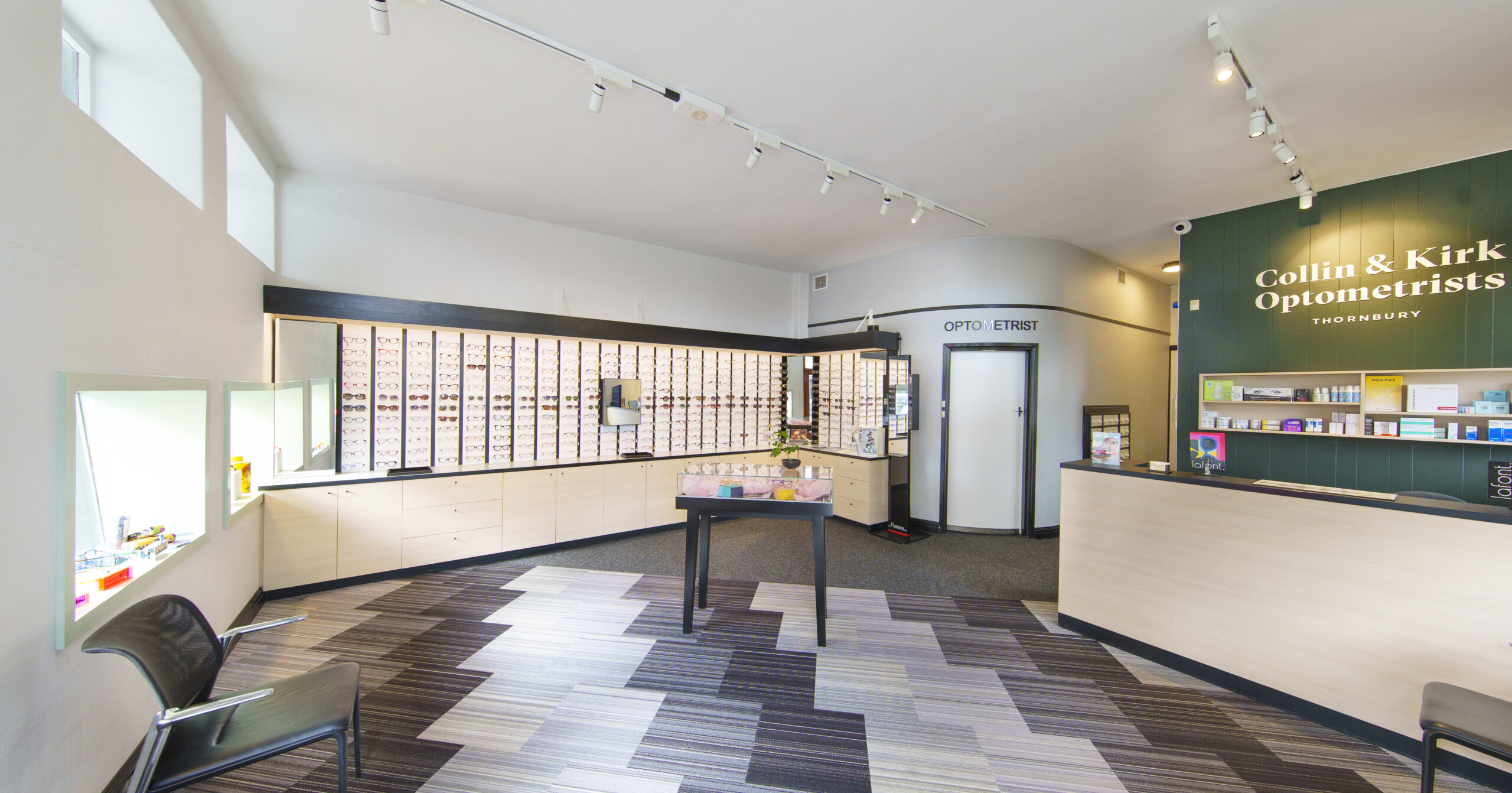At Collin & Kirk Optometrists Thornbury, we recommend a comprehensive eye examination to thoroughly check your vision and ocular health at least every two years.
We will assess your vision and discuss our recommendations and options available to you. These may range from spectacles to contact lenses depending on your visual requirements, occupation, and lifestyle.
This examination includes using drops that will dilate your pupils to allow a detailed assessment of your eye health. This will allow us to check for any diseases including cataracts, glaucoma, age-related macular degeneration as well as any ocular complications from conditions such as diabetes and high blood pressure.
This examination can take up to 1 hour and we recommend that you bring sunglasses as you will be light sensitive after the examination due to your enlarged pupils.
 Scroll to Read More
Scroll to Read More



Our Technology
We use the latest diagnostic equipment to examine your eyes

Optical Coherence Tomography (OCT) produces high resolution 3D images of the retina. This information is essential in disease detection and monitoring of diseases such as glaucoma, age-related macular degeneration, and diabetes.
Optical Coherence Tomography Angiography (OCT-A) is an advanced technology that produces high resolution images of fine blood vessels in the retina. OCT-A can detect changes in the retinal blood vessels in conditions such as diabetic retinopathy, age-related macular degeneration, and glaucoma.
Anterior Optical Coherence Tomography produces a high-resolution magnified cross-section of the front of the eye. This scan is essential for fitting scleral lenses as it accurately measures the distance between the scleral lens and the cornea.
Corneal topography creates a highly accurate 3D map of the shape of the cornea. This information is necessary to detect and monitor corneal conditions such as keratoconus and corneal grafts. It is also essential for designing complicated contact lenses including Ortho-K lenses. The corneal topographer also supplies highly accurate information about the quality of the tear film and aids in the diagnosis of dry eye disease.
Slit lamp photography allows us to record details at the front of the eye and detect changes over time. This is particularly valuable with contact lens wear.
Digital retinal photography produces an image of the back of your eye to allow us to monitor your ocular health. This is important when monitoring conditions such as diabetic retinopathy, age-related macular degeneration, glaucoma.
Corneal Pachymetry measures the thickness of the cornea. Corneal thickness is a key factor to assess the risk of developing glaucoma. Regular measurement of corneal thickness is necessary to determine if there is progression in keratoconus.
Axial length measurement is a measurement of the length of the eye. Axial length is the gold standard for assessing myopia progression as it produces highly accurate measurements independent of eye focussing. This is essential as young myopic patients have highly active focussing systems.
Visual field examination is a measure of peripheral vision. This allows early detection of glaucoma and can assist in diagnosing diseases such as brain tumours and strokes.



